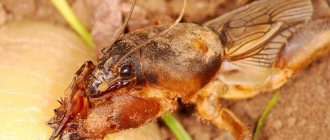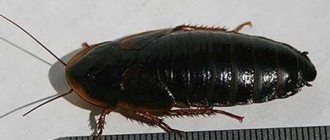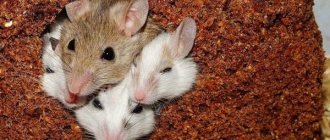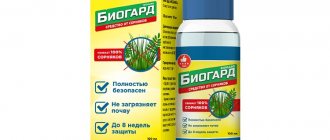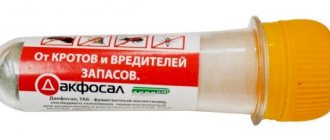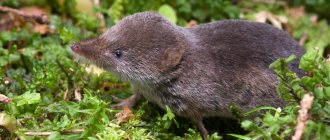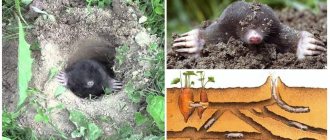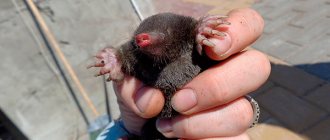Home » Useful information
Olga Polyakova 05/04/2020
37266 Views
Snakes are legless representatives of the reptile world. These cold-blooded creatures are distributed almost throughout the world, except for a few islands. Even proximity to snakes is an unpleasant occurrence, and this is not only a matter of disgust or unreasonable fear of these reptiles.
Forced proximity
Now on many forums you can find many posts from owners of sites in various regions of Russia that there are a lot of snakes, we are almost talking about an invasion. However, this is not quite true. Quite the contrary.
It is we, people, trying to be closer to nature, who buy areas of forests for development, cutting down trees, thereby depriving snakes of their natural habitat. The reptiles have no choice but to look for a place of residence and food elsewhere, namely, in the nearest plots in garden cooperatives. By their nature, snakes do not seek proximity to humans; on the contrary, they avoid them in every possible way. When snakes sense human footsteps in their immediate vicinity, they try to escape as quickly as possible. Some curl up into a ball and stop moving. All this suggests that we scare them no less than they scare us.
Please note that snakes never attack first unless you provoke them with sudden movements and waving of your arms, or unless your presence threatens the safety of their nest or offspring. Of course, in many cases you may not notice the snake right away, or you may not see the nest and get close to it, unintentionally provoking an attack. Therefore, they try to drive the snakes out of the area before there are too many of them.
Protecting your home from snakes
A snake in the house is not at all the same as a reptile in the garden. Most often they build a nest in the basement. If you suspect that you have unwanted “neighbors,” sprinkle a thin layer of flour on the floor there. If there are snakes, characteristic marks will certainly remain on it. The duration of the experiment is 10–14 days. Another way to check is to lay out long strips of tape, sticky side up, or pieces of rustling cellophane on the floor.
A snake in a house means much more psychological discomfort for its inhabitants than the same reptile in a garden plot
After making sure that there really are snakes in the house, it is best to seek help from professionals. To prevent snakes from re-entering living spaces, carefully inspect all ventilation openings and cover those that exceed 1 cm in diameter with a fine mesh. Seal holes and cracks in the foundation.
Poisonous or not?
Before selecting methods and techniques for expelling snakes, you need to determine what specific species you are dealing with. Because not all chemicals are equally effective for all species at the same time. When you see a snake on your property, the first thing you need to do is determine whether it is poisonous. It's very easy to do. Pay attention to the image.
Poisonous snakes have a triangular head; it is in the corners that the glands that produce poison are located. Their mouths contain teeth, and their pupils are shaped like a cat's. Non-venomous snakes do not have teeth, and their head is a continuation of the body and has a rounded shape. can most often be found in Russia :
- Snakes;
- Polozov;
- Vipers;
- Copperfish.
Snakes and snakes are not poisonous and in this regard are safe for humans. It is very easy to recognize them. It has yellowish, rarely white ears. And snakes have a yellow belly.
Copperheads are mistakenly considered poisonous, but this is not true. Their bite is not fatal. You can recognize the copperhead by its characteristic pattern and color - a copper shade. Pure black individuals are very rare .
The viper has a characteristic color along the spine. Less common, but there are vipers without a pattern on the body or completely black. The average length of snakes of this species is 70-80 cm, less often, they reach a length of 1 m. A viper bite is not fatal to humans, but it is imperative to provide first aid and take the victim to the hospital.
If you notice any of the listed snakes on your property , under no circumstances:
- Don't lean towards her. The most dangerous thing is considered to be a snake bite on the face. Even if the snake is not poisonous, infection can enter the wound from the cavity of its mouth, and the bite may leave a noticeable scar;
- Do not wave your arms in an attempt to scare away the snake. This behavior will only provoke an attack;
- Don't try to kill the snake. Some species of copperheads and vipers are listed in the Red Book of a particular region. In addition, there is an opinion that when dying, a reptile emits a special smell that will be noticeable by other individuals and will attract them;
- Don't turn your back on the snake and start running away. Just back away slowly and the snake will quickly leave the area.
Looking for a place in the sun
Despite the high technologies used in agriculture, people continue to expand their holdings. Unfortunately, this leads to disruption of ecosystems. For example, in Alaska, bears walk the streets. And in India, tigers attack people.
In a similar way, snakes end up on the territory of country houses, especially if the following are located next to them:
- forest;
- lake;
- abandoned estates;
- wastelands overgrown with grass and shrubs.
In search of food, reptiles involuntarily crawl into “private” territory, which is full of delicious prey. Typically, snakes feed on:
- eggs;
- rodents;
- large insects;
- birds.
All these components can be found in abundance among farmers, who often raise chickens or pigeons. In addition, no home is safe from the presence of mice, a favorite delicacy of crawling creatures. This is how snakes appear at the dacha, fighting for a place in the sun. Most often, animals settle in compost or garbage pits. They can be found in bushes that are rarely cleared. Sometimes the creatures are accidentally brought in with construction materials. Let's get to know the dangerous guests better.
Factors that provoke the appearance of snakes
Most often, snakes are spotted in areas located near or on the territory of a forest belt - a habitat familiar to snakes.
there may be several reasons why reptiles have chosen your property
- Your site is in disrepair. That is, there are heaps of construction debris, dry branches from cut trees, scattered pieces of slate, etc. A dilapidated house on a neighboring property could also be a pile of garbage for snakes;
- Availability of secluded places. Snakes prefer to make their nests in dark, secluded places. These can be sheds and utility rooms, cellars and basements, sometimes chicken coops, firewood sheds;
- Thickets and tall grass . Dense bushes, raspberry fields and areas with tall, uncut grass are attractive to snakes. If your plot is kept in order, but nearby there are abandoned, unkempt vegetable gardens, the perimeter of which is overgrown with tall grass, you will have to improve them a little;
- Availability of food. Snakes feed on mice, rats, lizards, large insects, fish, and frogs. If you have a decorative pond with live inhabitants, snakes can hunt them. If mice live in the area, the reptiles will be provided with sufficient food, and there will be no reason to leave the area. Therefore, in this case, the fight against snakes should begin with the removal of rodents.
Why do snakes appear in the garden plot and how to prevent it
Most of the snakes living in Russia are not dangerous, except that they bite painfully. Of the poisonous ones in the middle zone, the most common viper you can find is the common viper. Snakes prefer quiet, warm and damp places. In gardens they settle in:
- the intertwined roots of old fruit trees;
- dense thickets of bushes, tall grass;
- rotten stumps;
- woodpiles;
- stacked building materials;
- heaps of garbage or compost;
- basements, sheds, cellars.
When meeting a snake, many people immediately panic and can no longer distinguish a harmless snake from a poisonous viper.
Man himself is to blame for the migration of snakes closer to “civilization.” In the process of deforestation, their natural habitat is destroyed. It’s easy to make your site unattractive to them:
- mow the grass regularly;
- uproot thickets of bushes, old trees, and stumps left behind;
- eliminate deposits of garbage and other untidy “debris”;
- install the fence on a concrete base or stretch a fine-mesh metal mesh underneath it.
Snakes may well choose dense thickets of grass as their home
Video: why snakes settle in garden plots and what to do when meeting a reptile
Snake traps
Special snake traps are available for sale. Their designs and operating principles are very primitive.
The trap is a small piece of thick cardboard, or in more expensive versions – plastic, the surface of which is covered on one side with adhesive tape.
Crawling onto the trap, the snake becomes stuck and can no longer move. All you have to do is carefully take the trap with the snake away from the area, free the reptile and let it go. To do this, you will need to pour oil on the snake, which will weaken the effect of the glue. The inconvenience is that you need to very clearly know the routes of movement of the snake around the site in order to set a trap exactly on its route. Relying on chance, you can wait a very long time. To increase the likelihood of being caught, bait can be placed on the trap. For example, sweet berries or grasshopper. The most popular snake traps are:
- "Easy Gift 5 Pcs Butter Scented Humane Trap". The trap is convenient because its size is larger than many others. When unfolded, it is a square 32x32 cm. It can also be rolled into a tube. A simple device is made from thick cardboard and non-toxic glue;
- "Catchmaster 402 Baited Rat, Mouse and Snake Glue Traps". Two traps in one package designed to catch mice, rats or snakes. However, the trap can only hold small reptiles;
- "Humane Snake Trap by Snake Trap". A more “advanced” trap with a closed body made of plastic and impressive internal space. The closed design eliminates the possibility of kittens and puppies getting caught in the trap, which cannot be said about the two above-mentioned models.
Not an easy fight
Encountering snakes is scary, I experienced it myself. It’s true that it’s not vipers that have settled in my home, but snakes, they are not poisonous. But it was still not very pleasant when I didn’t notice such a snake in the garden and received a bite in the shin. Not fatal, of course, but unpleasant. It was from this moment that our struggle for territory began. I’ll say right away that I had no intention of giving up the site to creeping reptiles and took up the matter with all seriousness.
Snakes are unnerved by knocking and noise. By nature they are deaf, but they feel the vibration of the earth very well. Throughout the entire site, literally throughout everything, literally every two meters, I hung tin cans, pieces of slate, homemade weather vanes, everything that rattles in the wind on poles. As luck would have it, after a couple of days the weather was so sunny, there was no hint of wind, only in the evenings my devices made quiet sounds.
In such conditions, you don’t mind spending money, so I purchased an electronic snake repeller. I can’t say exactly what helped, but I haven’t seen any more crawling creatures. I wish you good luck in this difficult struggle.
Repellents
Repellents have proven themselves in the fight against rodents and insects, but with snakes everything is a little different.
The strong-smelling active ingredients of the drug should repel uninvited guests.
But considering that the tongue is the organ of smell in snakes, whether the repellent affects it or not is a matter of chance. If the snake touches the substance with its tongue, it will leave; if not, it will crawl over it and go in the direction it needs. If you decide to try this method, choose from the following repellents:
- "Dr. T's 4-Pound Nature Products Snake Repelling Granules" . The drug is in the form of granules, the active substances of which are sulfur (28%) and naphthalene (7%). Some summer residents use these two components independently, scattering them around the site. However, this is not as effective. The manufacturer recommends scattering the granules in paths. If you are fighting snakes, the width of the paths should be 10-12 cm, if you are fighting rattlesnakes - 20-30 cm. After each precipitation, you need to re-pour the granules;
- "Havahart 6400 Snake Shield Snake Repillent". The active component of the drug is sulfur and essential oils of pine nuts, cinnamon, and cloves. It is recommended to scatter it along the perimeter of the site, around compost heaps, sheds, firewood sheds in paths 20 cm wide;
- "Sweeney's 5200 All Out Snak Repillent, Granular, 4-Pound". A product with a completely natural composition based on clove, cedar and cinnamon oils. According to reviews, this repellent in most cases helped repel garden snakes, black snakes and copperheads.
When using repellents, not under any circumstances surround burrows and areas where snakes are concentrated with the substance. By creating such a repellent ring, you will only achieve that they will not be able to leave their habitat. Do not use them indoors and be careful that the granules do not fall into the hands of a child.
Radical ways to expel snakes
You can drive away the snake community from your summer cottage if you exterminate rodents, lizards, frogs and insects. A strong young cat can handle this, and will happily catch everything that rustles and crawls in the bushes and tall grass, including snakes. You can also get a Jagd Terrier dog. This dog is very difficult to raise and care for, but he is a real threat to amphibians.
Jagd Terrier: Enemy of Snakes No. 1
There is also a “recipe” for snakes like hedgehogs. They feed on insects and plants, but do not tolerate the presence of reptiles, mercilessly destroying them. The only thing is that hedgehogs are quite difficult to attract, and if this is successful, they need to be constantly fed.
The perimeter of the dacha, areas under the barn or house, and especially under its threshold, can be watered or laid with rags soaked in saltpeter, herbicide or other chemicals. But this can seriously harm your area and significantly reduce the comfort of your rest. Harsh chemicals have a pungent odor and, if used incorrectly, can burn out literally everything it comes into contact with, excluding the appearance of vegetation in the treatment areas for several years.
Ammonium nitrate is a powerful oxidizing agent
Snakes are terrified of high temperatures and can smell flames and a burning smell from a kilometer away. But burning grass, rubber and other petroleum-based materials in a summer cottage is a rather dangerous decision and harmful to the ecology of the area. Much less damage will be caused by hanging bells, small windmills or rattles on the site. Only the sounds they make will irritate you more, and as soon as you take them off, the snakes will come back.
Snakes make nests in compost pits, manure piles, garden debris, or inside old rotten tree stumps. If you find one, do not try to destroy the snake’s lair yourself - let professionals who are well prepared to deal with poisonous representatives of the snake kingdom do this.
Snake repellers
Considering the mixed reviews from summer residents about certain independent methods of getting rid of snakes, we can come to the conclusion that it is much safer and more likely to achieve what you want with the help of special repellers.
They are a small cylindrical device with a pointed end.
The body can be made of plastic or metal. Repellers can operate on both conventional and solar batteries. To activate, you just need to bury the device in the ground to the recommended depth. Conveniently, the device only needs to work for a couple of days to force the snakes to capitulate. Taking into account the characteristics of reptiles, namely the fact that they do not hear, but only feel vibrations, it is necessary to choose ultrasonic repeller models. Ultrasound itself will not affect them, but it will bounce off the body of the device, thereby forming a noticeable vibration. The best repellers according to user reviews are:
- "EcoSniper LS-107". Its effect covers an area of up to 300 square meters. Four batteries powering the device creates waves with a frequency of 350-450 Hz;
- Weitech WK-0677 Solar. This device is an ideal assistant if your area is attacked not only by snakes, but also by moles or rodents, as it is universal. A special feature of the model is that it operates on a solar battery. Coverage area – up to 350 sq.m.;
- "Tornado BOZ.01." A special feature of this device is its operation at variable frequencies. The duration and frequency of the pulses changes every 15-20 minutes. This eliminates the possibility of snakes becoming accustomed to the stimulus. The repeller operates on batteries and is designed for an area of up to 200 sq.m.;
- "Uniel UDR-S20". The device with a degree of protection against moisture IP44 is powered by a solar panel and produces oscillations at a frequency of 400 Hz. Covered area – 500 sq.m.;
- "HELP". If your plot measures about 625 sq.m., this device will suit you. It is powered by a solar panel, has a durable body made of aluminum and plastic, and has a built-in flashlight between the body and the lid.
What animals are snakes afraid of? What animals are natural enemies of snakes?
Snakes are one of the most dangerous animals on Earth. Many people suffer from ophidiophobia - the fear of snakes. These reptiles repel humans with their cold blood and slippery, wriggling bodies.
Some snakes are very poisonous. Many can kill a person with just one bite, while others eat large animals alive. It’s hard to believe, but even such formidable predators have someone to fear. It turns out that snakes have many enemies!
Among their own relatives, snakes are usually threatened by non-venomous reptiles. Among them: yellow-bellied snake, lizard snake, copperhead and mussurana. The latter species can be called the worst enemy of the poisonous snake. Mussurana lives in South Africa and feeds on spear-headed snakes, swallowing them whole.
But snakes have the most enemies among birds. For example, the white stork even eats poisonous reptiles. This bird first stuns large snakes with its beak and then swallows it completely. In general, many species of storks hunt various reptiles. In Europe, serpent eagle and dwarf eagle hunt snakes. The latter is not so dexterous, so sometimes the bird can die from the bite of a poisonous snake. Other snake-eater birds are the red kite, the crow, the magpie, and the jay.
Thanks to R. Kipling, everyone knows the ardent enemy of snakes Rikki-Tikki-Tavi. In nature, Ricky is a mongoose, a small and brave lover of eating reptiles (mainly cobras). However, the battle between a mongoose and a cobra is a real drama in which the winner is not easy to determine in advance.
Among other mammals, such enemies of snakes as weasels, ferrets, stoats and others are known. Amazingly, even a domestic pig can eat a snake. Pigs have an advantage over poison - a thick layer of fat. It stops the movement of poison to the blood vessels.
In the wild, wild boars hunt reptiles. Another formidable enemy of the snake is the common hedgehog. It is difficult for reptiles to bite the animal because of the thick needles, but hedgehogs are also immune to the effects of poison. And finally, it is worth mentioning an equally dangerous enemy of snakes - humans.
Unusual ways
On the Internet you can find very interesting methods, which, nevertheless, in some cases had the desired effect.
- The natural enemies of snakes are hedgehogs, which hunt reptiles quite actively. Some people advise introducing hedgehogs to the area. To do this, every night they need to leave a treat - a plate of milk and pieces of raw chicken. And a completely extreme method of fighting is the “drunk hedgehog”. It has actually been used since medieval times in Hungarian territory. Hedgehogs should be treated to beer or wine instead of milk. A supposedly drunk hedgehog is especially ferocious. But we would not recommend experimenting like this;
- Cats or dogs, especially the Jagdterrier breed, are quite successful at hunting snakes. This method is not recommended if your pet does not have the appropriate character and does not demonstrate hunting skills;
- The smell of some plants, particularly garlic, can repel snakes. You can plant a plant around the perimeter of the site;
- mustard powder has a similar effect
- Install homemade ones around the perimeter of the site turntables, which will create vibration and transmit it to the ground. If you have a lawn on your property, trim it regularly with a lawnmower to discourage reptiles.
If none of the methods helped you , you can always call herpetologists - these are people who specialize in catching snakes.
Folk remedies
Such methods of fighting snakes are mainly aimed at creating unfavorable conditions for them and forcing the reptiles to leave the area voluntarily.
Natural enemies
The fact that snakes and mongooses cannot stand each other is well known thanks to Rudyard Kipling's fairy tale “Rikki-Tikki-Tavi”. Mongooses are exotic for Russia, but there are other animals with which reptiles do not get along well:
- Jerzy. They successfully hunt not only snakes, but also other unwanted “guests” (rats, mice, moles, toads). To attract them to the site, place several saucers with milk and scraps of meat. At the same time, there is a risk that, after tasting the treat, the hedgehog will switch to berries. “Doping” for them is alcohol (wine or beer), but drinking animals is inhumane. Although the fact that a drunk hedgehog is a terrible weapon against snakes was found out quite a long time ago and reliably.
In nature, hedgehogs often feed on snakes, and a drunk hedgehog is generally a “weapon of mass destruction” for reptiles
- Cats and dogs. Snake venom is relatively safe for them, but they are not as effective as hedgehogs, for whom snakes are food. Pets will hunt them according to the mood. An exception is some hunting dog breeds (for example, Jagdterrier, Australian terrier). And be mentally prepared for the fact that a cat that has killed a snake may well “boast” of the trophy to its owner.
Jagdterrier is a German hunting dog breed
Video: hedgehog vs snake
Sounds and smells
Due to the increased sensitivity of their olfactory organs, snakes do not like to live where any pungent odors are present. You can, for example, surround the area around the perimeter with plantings of onions or garlic, scatter mustard powder or ground chili pepper. But this is a preventative measure. It will most likely not be possible to drive away reptiles that have firmly established themselves in the area. It is also believed that they are repelled by clover, marin root, thyme, and forest geranium. But these are rather popular beliefs.
The pungent smell of onions and garlic is not to the liking of many harmful insects; snakes also react negatively to him
Also, reptiles cannot tolerate the smell of burning, smoke and fire. Some recommend burning an old tire on the property, but this is an extreme measure that will harm not only snakes, but also the gardener himself and his neighbors. Light a regular fire.
A fire is both a way to force snakes to leave and to get rid of plant and other debris, the heaps of which they use as a nest
Not always, but natural wool gives results. Along the perimeter of the area and in the places most attractive to them, you can lay out woolen threads, scraps of wool left after combing dogs, cats, and sheep.
Precautionary measures
Once you have successfully cleared your area of snakes, it is important to prevent them from reappearing.
For this:
- Regularly trim the grass on and around the site, remove dry leaves and sawn branches;
- Make it uncomfortable for snakes on your site - destroy the small rodents that make up their diet;
- If you live in close proximity to a forest, snakes will periodically visit you. To prevent them from getting into the area, surround it with a fence. A snake fence is made from a fine-mesh metal mesh, which is dug in around the perimeter to a depth of 25-30 cm. The height of the mesh above the ground should be at least 80 cm. The support posts should be located on the inside so that snakes cannot climb on them. And the mesh fabric itself should be tilted outward at an angle of 30 degrees.
How to get rid of vipers in your summer cottage
These snakes do not like noisy and inedible neighbors like humans, plus cleared areas. If your site is not overgrown with weeds, you visit it often, there are no abandoned dachas in the area, and dangerous “residents” still do not leave, then you need to analyze and eliminate the reasons for such love for the land. After killing the viper, the body, as well as the top layer of soil on which it died, must be carried away as far as possible. Snakes eat each other, and the smell of a helpless, killed relative will be very attractive to them.
Find out how to get rid of mice.
First aid for a bite
If you are bitten while trying to catch a snake or simply through negligence, it is important to provide first aid correctly.
The following steps
should well known to all members of your family:
- Immediately calm the person who has been bitten . A rapid heartbeat will speed up blood circulation, and the poison will spread faster throughout the body;
- The victim should immediately drink several glasses of liquid . It must be plain or mineral water. Drinking will help speed up the removal of the toxin from the body and slow down the absorption of the poison;
- You cannot drink tea, coffee, or alcohol . The latter thins the blood, allowing the toxin to spread throughout the body faster. For the same reason, you should not treat the wound with alcohol;
- Do not apply a pressure bandage to the bite site. This will cause the poison to concentrate in one place and cause tissue infection;
- Poison can be sucked out from a wound only if the person doing this does not have wounds on the oral mucosa or tooth decay. In this case, the poison that enters the stomach will not pose a danger to the person providing assistance. If there are contraindications to such actions, it is better not to suck out the poison;
- Carefully treat the edges of the bite with brilliant green or alcohol ;
- Do not use potassium permanganate , cut the bite site and cauterize it;
- After this, the person needs to be taken to the nearest hospital or call an ambulance . While you wait for paramedics to arrive, position the person so that the head is lower than the body. This will allow blood to flow faster and easier to the brain.
Your first aid kit must have the following medications:
- Antipyretic;
- Pain reliever;
- Antihistamine;
- Antibiotics;
- High blood pressure medications;
- Medicines for the cardiovascular system.
The article was written for the site.
Tags: Landscaping, Pest control, Dacha
Varieties of reptiles in the middle zone
There are dozens of species of reptiles in nature. Some live in the tropics. Others are in the desert. Residents of the middle zone are interested in snakes that live in forests or reservoirs near dacha areas.
These include:
- yellow-bellied snake (the largest snake in Europe, reaches 2 m in length, brown or black color, yellow belly);
- copperhead (adult length about 70 cm, color light brown);
- already (a distinctive feature of the animal is yellow spots on the head);
- common viper (has a pattern on the body, is colored gray or brown);
- Nikolsky's viper (black monochromatic color).
The first 3 varieties do not pose a mortal danger to humans. After a bite, several scars will remain on the body, and a vivid impression and stress will remain in the head. Their diet usually includes small rodents and frogs. Therefore, such guests can even bring benefits by freeing the area from pests. When it comes to vipers, these are exactly the animals you need to stay away from.
Reptiles are most aggressive in early spring, when they lay eggs and moult.
What to do if a snake bites a dog?
Dogs are about as sensitive to viper venom as humans. As a rule, they receive a bite in the area of the nasolabial triangle, that is, when they sniff a snake. Swelling quickly develops and the symptom of dysphagia occurs when the dog is unable to swallow food or water. In hunting dogs, symptoms of poisoning spontaneously disappear after about 6 hours, which does not exclude further complications from the bite, usually associated with the kidneys. In large dogs, a severe clinical picture of poisoning may develop; the animals lie down, groan, pathologies of the heart, murmurs, wheezing, and pulmonary edema may be detected. Treatment, of course, should be carried out in a hospital. As a rule, we have about 5-6 hours to deliver the animal to the hospital.
What to do if bitten by a snake
- immediately after the bite, place the victim in a comfortable and safe place, ensuring complete rest. It is important to remember that independent movement of a person when bitten by a snake is extremely undesirable. In order to slow down the spread of poison in the body, limit the mobility of the affected organ. If you are bitten on the arm, secure it in a bent position.
- in the first seconds after a snake bite, pressing with your fingers, open the wound and begin to vigorously suck out the venom with your mouth, spitting regularly. If there is little saliva or there are wounds on the lips or in the mouth, you should put some water in your mouth (water dilutes the poison). Suction must be carried out continuously for 15 minutes. This allows you to remove 20 to 50 percent of the poison from the victim’s body. For the person providing assistance, suctioning out the poison is not dangerous, even if he has wounds or abrasions in his mouth.
- after the snake’s venom has been sucked out, the bite wound must be disinfected and a sterile bandage applied, which should be periodically loosened as swelling develops so that it does not cut into the soft tissue.
- If you are bitten by a snake, you can use the following medications:
- painkiller (analgin).
- antihistamines (antiallergic - diphenhydramine, suprastin, etc.).
- drugs that support the cardiovascular system (validol, valocardine, etc.).
- Give the victim more tea, broth or water (it is better to avoid coffee as an stimulant). This will help remove the poison from the body.
- try to immediately deliver the victim to the nearest medical facility, transporting him on a stretcher.
- Monitor the patient’s condition: alarming symptoms are shortness of breath (heart problems), burning in the throat, hoarseness (swelling of the larynx). If necessary, perform prolonged artificial respiration and cardiac massage.
- If the snake dies in the process of being bitten, it is advisable to take a lot of precautions (without touching it with your hands), put it in a bag (preferably several) and take it to a doctor to determine the species of the snake.
